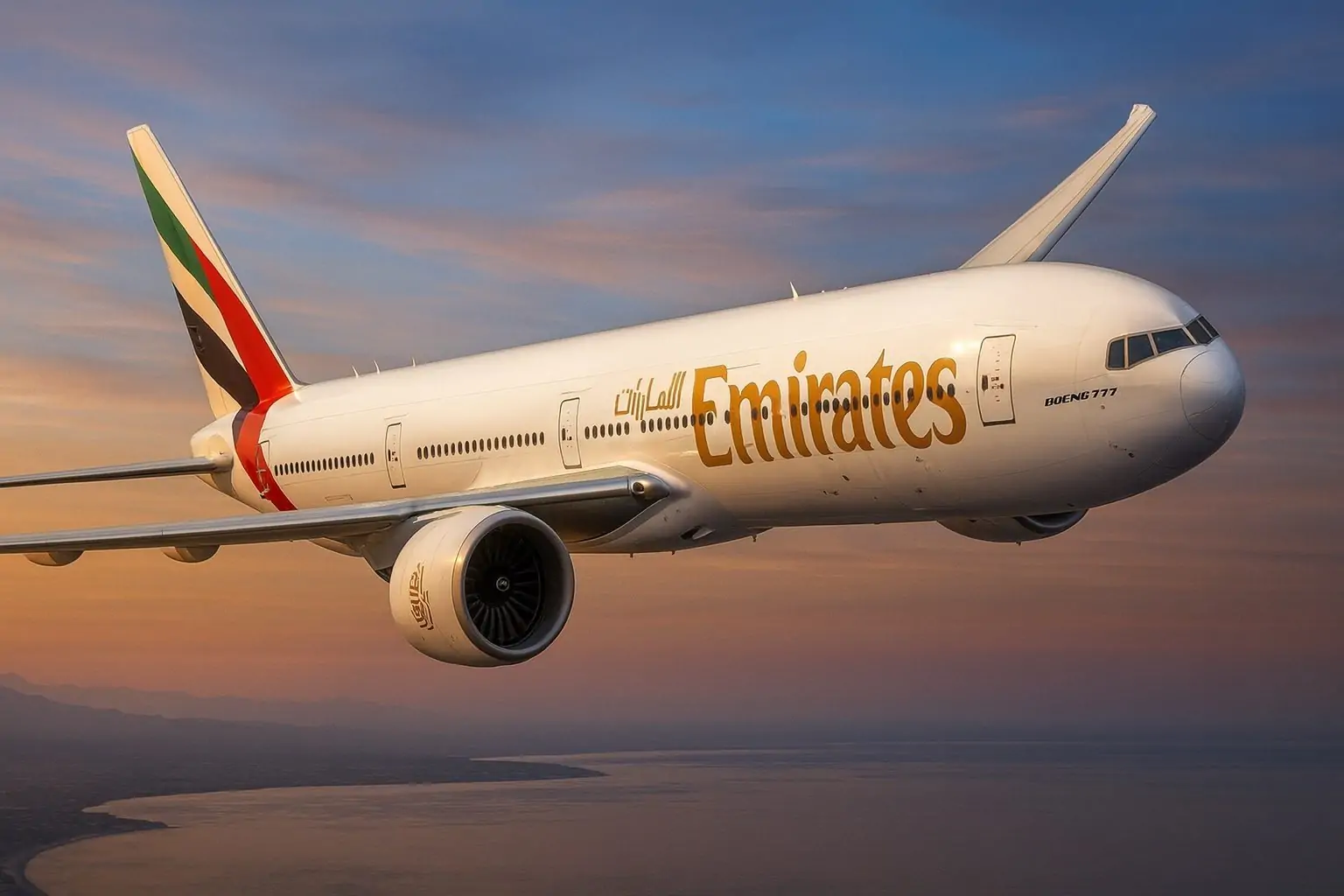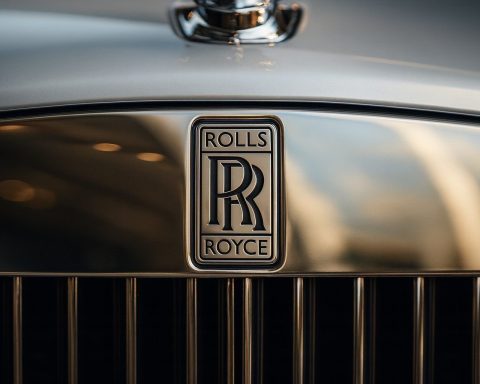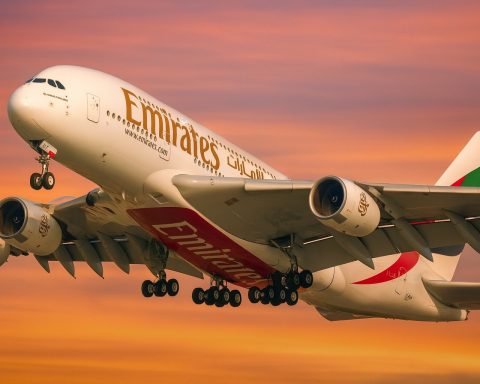- Emirates has now committed $41.4 billion to fresh widebody orders at Dubai Airshow 2025 – 65 Boeing 777-9s plus eight Airbus A350-900s, taking its widebody backlog to 375 aircraft. [1]
- Boeing has already built 26 Boeing 777-9s even though the aircraft will not enter service until 2027, with most units stored at Paine Field in Seattle. [2]
- Emirates’ latest 777-9 order comes with options to convert to the proposed 777-10 or smaller 777-8, effectively underwriting Boeing’s feasibility study for a stretched “super-777X”. [3]
- COO Adel Al Redha says the new 777Xs will not enter service before 2034, will feature Starlink connectivity from day one, and will be configured in both three- and four-class layouts – without “business-plus” mini-cabins. [4]
- Alongside aircraft orders, Emirates is using the airshow to push Starlink Wi‑Fi, AI partnerships (including ChatGPT Enterprise), SAF supply deals and local seat manufacturing, signalling a broader aerospace and technology strategy. [5]
Emirates closes Dubai Airshow 2025 with a record widebody bet
Emirates has effectively turned Dubai Airshow 2025 into a vote of confidence in Boeing’s most delayed jet – and a pointed reminder that patience is not infinite.
Over the past week the Dubai flag carrier has:
- Ordered 65 additional Boeing 777-9s powered by GE9X engines, a deal valued at $38 billion at list prices.
- Topped this up with eight more Airbus A350-900s worth roughly $3.4 billion, bringing its A350-900 orderbook to 60 aircraft. [6]
Together, the two transactions push Emirates’ backlog to 375 widebody jets scheduled through 2038, cementing its status as the world’s largest international airline and the single most important customer for Boeing’s 777X programme. [7]
In an analysis published today, Business Traveller notes that Emirates’ $41 billion spree amounts to both a lifeline and an ultimatum for Boeing: the airline is backing the 777-9 in huge numbers while publicly urging the manufacturer to “restore its former glory” after years of safety crises, production disruptions and certification delays. [8]
Why Boeing has already built 26 Boeing 777-9s before certification
While Emirates was signing more order forms, another number grabbed headlines today: 26.
According to an in‑depth piece from Aviation A2Z, Boeing has already produced 26 Boeing 777-9s even though the type is not due to enter service until 2027 and remains in the middle of a protracted certification campaign. [9]
Here’s how those aircraft break down:
- 4 airframes are flying or preparing for intensive test campaigns – flight testing, ETOPS trials, reliability and systems testing.
- 22 airframes are stored nose‑to‑tail at Seattle Paine Field (SEA), many resting on the ramp without engines, protected with covers and undergoing regular system checks, tyre rotations and humidity control. [10]
Boeing’s logic, as summarised by Aviation A2Z and earlier analysis from Simple Flying, is threefold: [11]
- Certification realism – Regulators want to see tests on production‑standard aircraft, not just prototypes. Building a batch early allows Boeing to validate its real-world manufacturing quality against what it is certifying.
- Production stability – Shutting down and restarting a widebody line is expensive and risky. Keeping the 777X line “warm” preserves skilled labour, supplier flows and tooling, and reduces the chance of quality lapses later.
- Faster deliveries later – Once certification arrives, Boeing wants to be ready to ramp up deliveries quickly to airlines like Emirates, Qatar Airways and Korean Air, which have all staked parts of their long‑haul strategy on the 777X. [12]
The strategy isn’t without risk. Stored aircraft may need rework if regulators demand design tweaks, and preservation itself costs money. But with more than 500 777X family aircraft ordered and repeated schedule slips, Boeing appears to have decided that “build now, fix if needed” beats another restart later. [13]
A 7‑year delay – but a key certification milestone
The 777X story is, in many ways, the story of the modern certification environment.
- The jet was launched in 2013 with an initial entry‑into‑service target of 2020.
- A 2020 uncommanded pitch event and broader scrutiny after the 737 MAX crashes pushed estimates to 2023, then 2025.
- In October 2025 Boeing again updated guidance, now expecting first 777-9 deliveries in 2027, and taking an additional multi‑billion‑dollar charge on the programme. [14]
Earlier this month, however, Reuters reported that the FAA has authorised Boeing to enter the third of five major phases of 777-9 certification flight testing, marking the most intensive tranche of evaluation to date. [15]
The delays are rippling across airline strategies:
- Singapore Airlines has pushed its own 777-9 introduction to 2027, in what analysts describe as the longest large‑aircraft certification timeline in modern history. [16]
- Emirates now expects its first 777-9s in Q2 2027, with newly ordered aircraft not entering service before 2034, according to Adel Al Redha. [17]
Yet despite the pain, airline bosses across the Gulf are publicly sticking with the jet. Emirates President Sir Tim Clark has called the 777-9 a “sound” aircraft while simultaneously “holding Boeing’s feet to the fire” on quality and timelines. [18]
Inside Adel Al Redha’s 777X plan: capacity, cabins and timing
Speaking to Airways on the sidelines of the airshow, Emirates Deputy President and COO Adel Al Redha laid out more detail on how the airline plans to use its enlarged 777X fleet. [19]
Incremental growth, not a change of heart
Al Redha described the 65 additional 777-9s as an incremental order that does not alter Emirates’ long‑term retirement plan for its existing 777 and A380 fleets. The new jets, he said, will not join the fleet before 2034, which explains why Emirates is simultaneously ploughing billions into retrofitting its current 777-300ERs and keeping A380s flying into the 2040s. [20]
To bridge the gap, Emirates plans to:
- Reactivate parked A380s, aiming to operate around 116 superjumbos by the end of next year.
- Continue an aggressive retrofit programme for its 777-300ERs, including refreshed business cabins and premium economy. [21]
No “business-plus” – but more classes
On product, Al Redha confirmed that Emirates will deploy the 777X in both three‑class and four‑class configurations depending on the route. Unlike many carriers, Emirates is not planning a small, ultra‑premium business section ahead of standard business seats; the COO stressed that passengers in the same cabin will receive identical seat specifications, rather than a tiered “business vs business-plus” layout. [22]
The airline does, however, intend to bring its newest hard products to the type, including:
- The “Game Changer” first‑class suites already flying on selected 777‑300ERs. [23]
- A full‑fleet rollout of Starlink satellite connectivity on the 777X from day one of service, promising much higher in‑flight bandwidth than current Ku‑band systems. [24]
Engines and testing in the region
Al Redha also flagged plans for regional testing of the GE9X engines in the Middle East environment, an important step given the combination of high temperatures, sand and heavy payloads Emirates routinely operates under. [25]
On the Airbus side, he reiterated that the A350‑1000 still falls short of Emirates’ requirements, mainly due to concerns over Rolls‑Royce Trent XWB‑97 engine performance, though the airline remains “interested” if those issues are resolved. [26]
The 777-10: Emirates’ dream “A380 successor” edges closer
Perhaps the most intriguing development today is around a jet that doesn’t officially exist yet: the Boeing 777-10.
Emirates’ press release openly states that its new deal includes options to convert the fresh 777-9 order into either the 777-8 or the proposed 777-10, and that this “provides strong backing” for Boeing’s 777-10 feasibility study. [27]
A detailed analysis by aviation site DJ’s Aviation today ties this directly to Dubai Airshow discussions:
- The 777-10 would become the largest member of the 777X family, a high‑capacity twin designed to edge closer to the A380’s passenger numbers while retaining twin‑engine efficiency.
- Boeing achieved technical feasibility for such a stretch in the 2010s but parked the idea amid broader programme turmoil.
- Emirates has been the driving force behind revisiting the concept, making it clear in public statements that it would seriously consider ordering the jet as an A380 successor. [28]
For Boeing, the 777-10 could eventually become its flagship passenger jet, filling the space once occupied by the 747 and offering a counter‑balance to the absence of new superjumbos.
But as DJ’s Aviation notes, any move beyond feasibility studies hinges on two things that aren’t yet guaranteed: credible demand from multiple airlines and a stable, certified 777-9 baseline. [29]
What passengers can expect on board the 777-9
While the industrial and political drama grabs most headlines, the 777X’s real impact will be felt in the cabin.
Updated reporting from Business Insider last week, following Emirates’ order, highlights several passenger‑facing features of the 777X interior: [30]
- A wider cabin than the 777‑300ER, allowing 10‑abreast economy seating with around 18‑inch‑wide seats, improving on current 777 and many A350 layouts.
- Larger overhead bins designed to hold roughly four bags each, reducing the risk of gate‑checking luggage.
- 29% larger windows, placed higher on the fuselage and with optional electronic dimming inherited from the 787 Dreamliner.
- Improved cabin humidity and pressurisation (around 6,000 ft), plus design tweaks to reduce onboard noise and dampen turbulence responses.
Emirates, Lufthansa, Qatar Airways and Cathay Pacific are all planning bespoke premium cabins on the type, from new first‑class suites to refreshed business and premium‑economy products. [31]
For Emirates customers, the combination of this hardware with Starlink connectivity and the airline’s existing soft‑product standards should make the 777-9 the heir to the A380 experience, even if it can’t match the double‑decker’s sheer spectacle.
Beyond metal: Starlink, AI, SAF and “Made in Dubai” seats
Emirates’ strategy at this airshow goes far beyond buying factory‑fresh jets.
A detailed roundup published today by Business Today shows how the airline is using Dubai Airshow 2025 to position itself at the centre of a broader aerospace ecosystem: [32]
- Connectivity and cabins
- Starlink rollout on 232 aircraft in the next two years.
- Cabin upgrades on 111 additional aircraft, including new entertainment systems.
- Network and partnerships
- Extended codeshare with Air Canada through 2032 and enhanced cooperation with South African Airways, alongside the existing deep partnership with flydubai.
- Sustainability
- An MoU with ENOC to develop sustainable aviation fuel (SAF) supply in Dubai.
- A research pact with Thales and Dubai Air Navigation Services (DANS) to use AI to predict congestion and reduce holding at Dubai International, cutting fuel burn and emissions. [33]
- AI adoption
- A headline‑grabbing partnership with OpenAI to deploy ChatGPT Enterprise across the airline, backed by training programmes and governance frameworks. [34]
- Local aerospace manufacturing
- A joint project with Safran Seats to establish Dubai’s first aircraft seat manufacturing facility.
- Collaboration with CCE Group on next‑generation cabin and cargo products.
- An MoU with Rolls‑Royce to bring Trent 900 engine maintenance for the A380 fleet in‑house from 2027. [35]
These moves align with Emirates Engineering’s recent Design Organisation Approval (DOA) from the UAE’s GCAA, allowing the airline to certify its own major design changes locally – a powerful lever when the fleet mix is in flux. [36]
The bigger picture: Middle East carriers as widebody kingmakers
Emirates is not acting in isolation. Across Dubai Airshow 2025, Gulf carriers have again proven themselves to be kingmakers in the widebody market:
- UAE national carriers (Emirates, flydubai, Etihad) together placed orders for over 500 aircraft, with Emirates leading on long‑haul capacity while flydubai and Etihad secured their own large Boeing and Airbus deals. [37]
- Airbus scored a 150‑jet A321neo win with flydubai, underlining how narrowbodies will complement, but not replace, the region’s appetite for big twins. [38]
Industry forecasts from Airbus and others still predict thousands of new aircraft deliveries into the Middle East over the next two decades, with widebodies remaining central to hub‑and‑spoke models in Dubai, Doha and Abu Dhabi. [39]
In that context, Emirates’ willingness to double‑down on the 777X – and to actively lobby for an even larger 777‑10 – sends a loud signal: the market for big twins is far from dead.
What to watch next
For Boeing, Emirates and the 777X, the next few years will be defined by execution rather than order announcements:
- Certification progress – Can Boeing move smoothly through phases three to five of flight testing without new surprises that would force another delay beyond 2027? [40]
- 777-10 decision – Will Boeing’s feasibility study conclude that demand and resources exist for a stretched model, and will other airlines join Emirates in asking for it? [41]
- A380 retirement curve – As Emirates nudges its A380 retirements into the 2040s, watch how quickly it needs equivalent or greater capacity from new twins – and whether Airbus responds with an A350 stretch. [42]
- AI and operational efficiency – If Emirates’ AI‑driven airspace and airport optimisation projects bear fruit, they could become templates for other mega‑hubs struggling with capacity and emissions constraints. [43]
For passengers, the headline is simpler: in the 2030s, Emirates intends to offer more seats, more space, faster Wi‑Fi and quieter cabins on routes that are already some of the world’s busiest. The road there may be bumpy, but the destination – a new generation of long‑haul flagships – is finally coming into focus.
References
1. www.businesstraveller.com, 2. aviationa2z.com, 3. www.emirates.com, 4. airwaysmag.com, 5. www.businesstoday.com.my, 6. www.emirates.com, 7. www.businesstraveller.com, 8. www.businesstraveller.com, 9. aviationa2z.com, 10. aviationa2z.com, 11. aviationa2z.com, 12. aviationa2z.com, 13. aviationa2z.com, 14. aviationa2z.com, 15. www.reuters.com, 16. mainlymiles.com, 17. www.emirates.com, 18. www.businesstraveller.com, 19. airwaysmag.com, 20. airwaysmag.com, 21. airwaysmag.com, 22. airwaysmag.com, 23. www.businessinsider.com, 24. airwaysmag.com, 25. airwaysmag.com, 26. airwaysmag.com, 27. www.emirates.com, 28. djsaviation.net, 29. djsaviation.net, 30. www.businessinsider.com, 31. www.businessinsider.com, 32. www.businesstoday.com.my, 33. www.flightglobal.com, 34. www.businesstoday.com.my, 35. www.businesstoday.com.my, 36. www.businesstoday.com.my, 37. gulfnews.com, 38. www.reuters.com, 39. www.flightglobal.com, 40. www.reuters.com, 41. djsaviation.net, 42. djsaviation.net, 43. www.flightglobal.com










